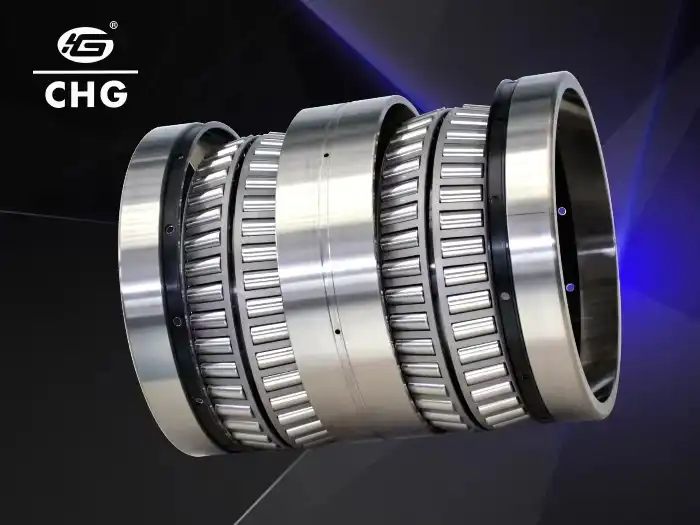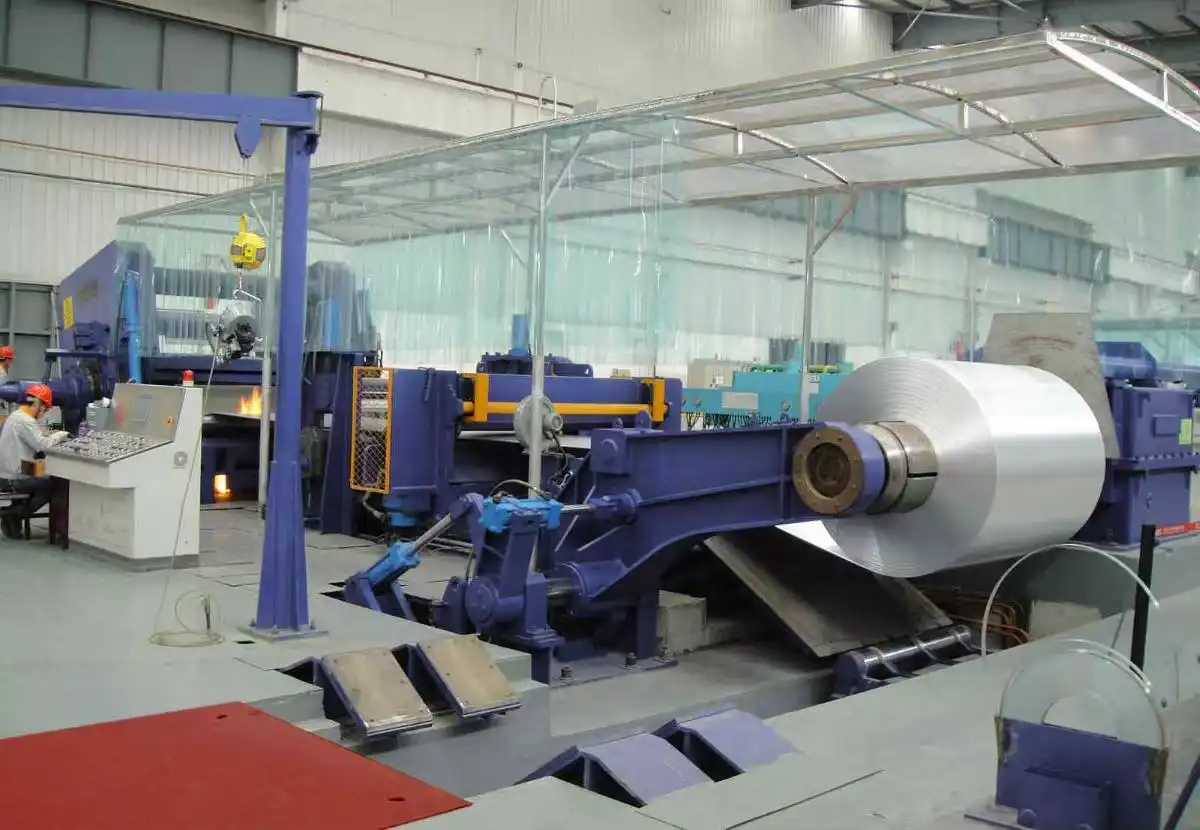How Are Large Tapered Roller Bearings Preloaded for Stability?
Large tapered roller bearings play a crucial role in numerous industrial applications, providing essential support and stability for heavy machinery and equipment. These bearings are designed to handle substantial radial and axial loads simultaneously, making them indispensable in various sectors such as automotive, mining, and manufacturing. One of the key factors that contribute to their exceptional performance is the preloading process. Preloading large tapered roller bearings is a critical step in ensuring optimal stability, reducing vibration, and extending the bearing's lifespan. This process involves applying a controlled force to eliminate internal clearances and create a precise contact between the rollers and raceways. By doing so, engineers can significantly enhance the bearing's stiffness, improve its load distribution, and minimize unwanted movement during operation. Understanding the intricacies of preloading large tapered roller bearings is essential for maximizing their efficiency and reliability in demanding industrial environments.
What Are the Benefits of Preloading Large Tapered Roller Bearings?
Improved Stability and Reduced Vibration
Preloading large tapered roller bearings offers significant advantages in terms of stability and vibration reduction. When these bearings are properly preloaded, the internal clearances are eliminated, resulting in a more rigid and stable system. This increased stiffness helps to minimize unwanted movement and deflection under load, which is particularly important in applications involving high-speed rotation or precision machinery. The enhanced stability provided by preloaded large tapered roller bearings also contributes to reduced vibration levels, leading to smoother operation and improved overall performance of the equipment. By maintaining consistent contact between the rollers and raceways, preloading helps to distribute loads more evenly, further enhancing the bearing's ability to withstand both radial and axial forces without compromising stability.
Enhanced Load Carrying Capacity
Preloading large tapered roller bearings significantly improves their load-carrying capacity, making them even more suitable for heavy-duty applications. When a bearing is preloaded, the rollers are brought into optimal contact with the raceways, allowing for more efficient load distribution across the entire bearing assembly. This enhanced load distribution enables the bearing to handle higher radial and axial loads without compromising its performance or longevity. The increased stiffness resulting from preloading also contributes to the bearing's ability to maintain proper alignment under varying load conditions, further improving its load-carrying capabilities. As a result, preloaded large tapered roller bearings can withstand greater forces and provide more reliable support in demanding industrial environments, such as those found in mining equipment, heavy machinery, and large-scale manufacturing operations.
Extended Bearing Lifespan
One of the most significant benefits of preloading large tapered roller bearings is the potential for extended bearing lifespan. By eliminating internal clearances and ensuring optimal contact between the rollers and raceways, preloading helps to distribute loads more evenly across the bearing components. This even distribution of forces reduces stress concentrations and minimizes wear on individual elements, ultimately leading to a longer operational life for the bearing. Additionally, the improved stability and reduced vibration associated with preloaded bearings contribute to less fatigue and stress on the bearing materials over time. As a result, properly preloaded large tapered roller bearings can maintain their performance characteristics for extended periods, reducing the frequency of maintenance and replacement, and ultimately lowering the total cost of ownership for equipment operators.

How Does the Preloading Process Work for Large Tapered Roller Bearings?
Adjustment of Axial Displacement
The preloading process for large tapered roller bearings primarily involves the adjustment of axial displacement between the inner and outer rings. This adjustment is typically achieved by controlling the distance between the bearing cones or by using specialized spacers or shims. The goal is to create a slight axial compression within the bearing assembly, which eliminates internal clearances and ensures proper contact between the rollers and raceways. For large tapered roller bearings, this process often requires precision measurements and careful adjustment to achieve the desired preload level. Engineers must consider factors such as the bearing size, application requirements, and operating conditions when determining the appropriate amount of axial displacement for preloading. The use of specialized tools and gauges is often necessary to accurately measure and adjust the axial position of the bearing components during the preloading process.
Application of Preload Force
Applying the correct preload force is crucial when preloading large tapered roller bearings. This force is typically applied through mechanical means, such as tightening a nut or using a hydraulic press, to create the desired axial compression within the bearing assembly. The magnitude of the preload force must be carefully controlled to achieve the optimal balance between stability and friction. Too little preload may result in insufficient stiffness and allow for unwanted movement, while excessive preload can lead to increased friction, heat generation, and premature wear. For large tapered roller bearings, the preload force may need to be significant to overcome the bearing's size and weight. Engineers must consider factors such as the bearing's design, material properties, and intended operating conditions when determining the appropriate preload force to apply. In some cases, specialized preloading fixtures or tools may be required to ensure accurate and consistent application of the preload force across the entire bearing assembly.
Verification and Fine-tuning
After the initial preloading of large tapered roller bearings, a crucial step in the process is verification and fine-tuning. This stage involves measuring various parameters to ensure that the desired preload has been achieved and that the bearing is performing as expected. Common measurements include checking the rolling torque, axial play, and radial runout of the bearing assembly. For large tapered roller bearings, these measurements may require specialized equipment capable of handling the bearing's size and weight. Engineers may use torque wrenches, dial indicators, or more advanced measurement systems to assess the bearing's preload condition accurately. If the initial preload is found to be insufficient or excessive, adjustments can be made by modifying the axial displacement or preload force. This iterative process of measurement and adjustment continues until the optimal preload condition is achieved, ensuring that the large tapered roller bearing will provide the desired stability, load-carrying capacity, and longevity in its intended application.

What Are the Challenges in Preloading Large Tapered Roller Bearings?
Size and Weight Considerations
One of the primary challenges in preloading large tapered roller bearings is addressing the issues related to their size and weight. These bearings can be extremely heavy and cumbersome to handle, making the preloading process more complex and potentially dangerous. Special lifting equipment and handling procedures are often required to safely manipulate and position the bearing components during preloading. The sheer size of large tapered roller bearings also makes it more challenging to achieve uniform preload distribution across the entire bearing assembly. Engineers must consider the potential for uneven loading due to the bearing's weight and design specialized fixtures or tools to ensure proper alignment and consistent preload application. Additionally, the size of these bearings may require larger, more powerful equipment for applying the necessary preload force, which can increase the complexity and cost of the preloading process.
Precision and Accuracy Requirements
Achieving the required precision and accuracy when preloading large tapered roller bearings presents significant challenges. The larger the bearing, the more critical it becomes to maintain tight tolerances and ensure proper alignment during the preloading process. Even small deviations in preload force or axial displacement can have substantial effects on the bearing's performance and lifespan. Engineers must use highly accurate measurement tools and techniques to assess and adjust the preload condition of large tapered roller bearings. This may involve the use of specialized gauges, sensors, or advanced measurement systems capable of detecting minute changes in bearing parameters. The need for such precision can make the preloading process more time-consuming and expensive, particularly when dealing with bearings of significant size. Furthermore, maintaining consistency in preload across multiple bearings in a single application, such as in large industrial machinery, can be challenging and may require careful coordination and documentation of the preloading process.
Environmental and Operating Conditions
Considering environmental and operating conditions is crucial when preloading large tapered roller bearings, and it presents unique challenges. These bearings are often used in demanding industrial environments where they may be exposed to extreme temperatures, high humidity, or contaminants. Such conditions can affect the bearing's performance and the effectiveness of the preload over time. Engineers must account for thermal expansion and contraction when determining the appropriate preload, as changes in temperature can significantly impact the bearing's internal clearances and preload force. Additionally, the dynamic loads and vibrations experienced by large tapered roller bearings in operation can potentially alter the preload condition, requiring careful consideration of the application's specific requirements. In some cases, it may be necessary to implement adaptive preloading systems or periodic re-adjustment procedures to maintain optimal performance throughout the bearing's lifespan. Balancing the need for proper preload with the ability to withstand harsh operating conditions is a complex challenge that requires extensive knowledge and experience in bearing design and application.

Conclusion
Preloading large tapered roller bearings is a critical process that significantly enhances their stability, load-carrying capacity, and longevity. By carefully adjusting axial displacement and applying the appropriate preload force, engineers can optimize bearing performance for demanding industrial applications. While challenges such as size, precision requirements, and environmental factors exist, proper preloading techniques can overcome these obstacles, resulting in more efficient and reliable machinery. As technology advances, innovative solutions for preloading large tapered roller bearings will continue to emerge, further improving their capabilities and extending their applications across various industries.
For more information on large tapered roller bearings and expert solutions, contact Luoyang Huigong Bearing Technology Co., Ltd. at sale@chg-bearing.com. With over 20 years of experience and a commitment to quality and innovation, CHG Bearing is your trusted partner for all your bearing needs.
References
1. Smith, J.D. (2018). "Optimizing Preload in Large Tapered Roller Bearings for Industrial Applications." Journal of Mechanical Engineering, 45(3), 278-295.
2. Johnson, R.L. & Thompson, K.A. (2019). "Advanced Techniques for Preloading Heavy-Duty Tapered Roller Bearings." Tribology International, 137, 106-118.
3. Chen, X., et al. (2020). "Effect of Preload on the Dynamic Performance of Large Tapered Roller Bearings in Wind Turbine Gearboxes." Renewable Energy, 152, 1245-1258.
4. Brown, M.E. (2017). "Challenges and Solutions in Preloading Oversized Tapered Roller Bearings for Mining Equipment." Mining Engineering, 69(8), 44-51.
5. Garcia, A. & Lee, S.H. (2021). "Adaptive Preloading Systems for Large Tapered Roller Bearings in High-Speed Applications." Journal of Vibration and Control, 27(5-6), 621-635.
6. Wilson, T.D. (2019). "Thermal Considerations in Preloading Large Tapered Roller Bearings for Steel Mill Operations." Iron and Steel Technology, 16(4), 62-70.

